Main Body
Chapter 10. Environmental Stewardship
Don Webster
Learning Objectives
- Define commonly used environmental stewardship terminology
- Articulate the impacts of climate change on tourism
- Identify other environmental impacts caused by, and affecting, tourism and hospitality sectors
- Describe a variety of initiatives to mitigate the impacts of environmental damage
- Explain how the environmental management system in BC functions
- Illustrate the conflicts that exist between tourism and resource extraction in BC
Overview
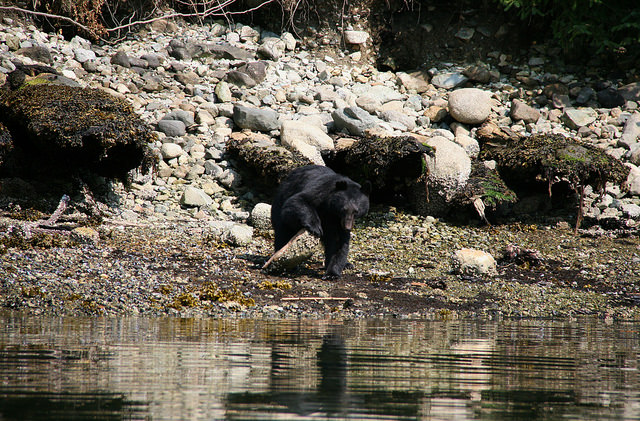
One of the main reasons people travel is to visit areas that are unspoiled, natural, beautiful, or unique in terms of their local environment. Unfortunately, through our actions either as tourism businesses or as visitors, we risk damaging the natural environments we depend on (Hardin, 1968; Williams & Ponsford, 2008). For this reason, environmental stewardship in tourism is of paramount importance.
Environmental stewardship can be defined as “the responsible use (including conservation) of natural resources in a way that takes full and balanced account of the interests of society, future generations, and other species, as well as of private needs, and accepts significant answerability to society” (Worrell & Appleby, 2000, p. 263).
This chapter explores the concept of environmental stewardship, the impacts of tourism on the natural environment (and vice versa), and ways we can minimize these impacts.
History of Environmental Stewardship
The topic of stewardship entered public consciousness in the middle of the last century in the works of writers such as Aldo Leopard (A Sand Country Almanac), Garret Hardin (The Tragedy of the Commons), and Rachel Carson (Silent Spring). Building on this growing consciousness, the concept of sustainability and sustainable development was introduced.
One of the first commonly accepted definitions of sustainable development came from the World Commission on Environment and Development, later renamed the Brundtland Commission. It defined sustainable development as meeting “the needs of the present without compromising the ability of future generations to meet their own needs” (Brundtland, 1987, p. 41). Sustainable development differs from environmental stewardship in that it may include aspects of social, economic and environmental sustainability, whereas environmental stewardship focuses solely on the natural world.
A related concept is environmental management, where the natural resources of the environment are managed through policies designed to protect natural values while providing a framework for use. In tourism, this management may be the responsibility of many groups including individual operators, tourism industry organizations, non-governmental organizations, or government agencies (Mercer, 2004; Williams & Ponsford, 2008).
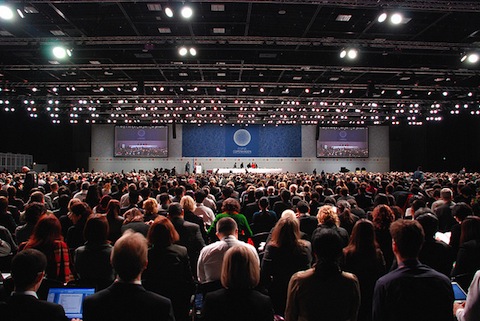
The Need for Change
Experts around the world agree that the need for stewardship has never been greater, as there exists overwhelming evidence that the environment is being irrevocably damaged by human actions. Climate change caused by increased greenhouse gas emissions (World Tourism Organization, 2008a) and the loss of biodiversity due to declining habitat loss are just two compelling issues.
Tourism continues to grow globally, and many tourists are in pursuit of pristine, natural environments. Development of tourism products results in increased urbanization, overuse, exceeding carrying capacity, and contamination of natural resources (Williams & Ponsford, 2008). Later in this chapter, we’ll provide several examples of specific tourism and hospitality impacts and approaches to mitigating them.
There is one issue that takes precedence over all others: climate change. The next section focuses specifically on this critical global issue and its relationship to the tourism industry.
Tourism and Climate Change
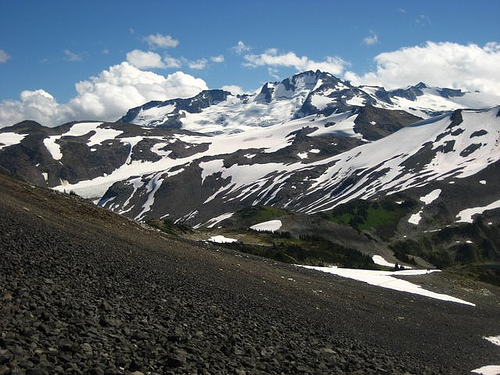
The Intergovernmental Panel on Climate Change (IPCC) concluded the “observed increase in global average temperatures since the mid-20th century is very likely (> 90% probability) the result of human activities that are increasing greenhouse gas concentrations in the atmosphere” (World Tourism Organization, 2008a, p. 38). Climate change should be considered to be one of the most important challenges currently facing the tourism industry.
Take a Closer Look: Climate Change and Tourism
The report entitled Climate Change and Tourism: Responding to Global Challenges, published by the World Tourism Organization (2008b), discusses the implications of climate change to the global tourism industry. It also suggests climate change adaption measures to be undertaken. Find the full report at Climate Change and Tourism: Responding to Global Challenges [PDF]: http://sdt.unwto.org/sites/all/files/docpdf/climate2008.pdf
Impacts of Climate Change
According to the World Tourism Organization, impacts from climate change on tourism include (2008a):
Direct climate impacts are changes that occur as a result of warming trends, cooling trends, or extreme weather events. Examples include a lack of snow to operate mountain resorts, melting glaciers in mountainous regions, and floods, landslides, and wildfires that could affect tourist areas.
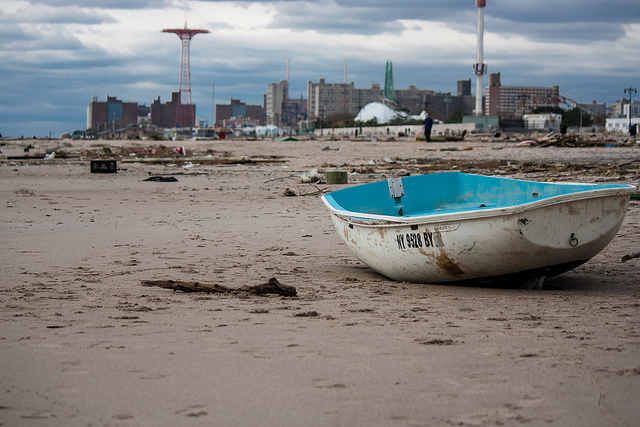
Indirect environmental change impacts are the byproducts of climate change. Global temperature changes may create water shortages, a loss of biodiversity, impacts to landscape aesthetics, and damage to infrastructure through extreme weather events. Examples in tourism include the inability to maintain resort facilities in desert environments due to water shortages, erosion of tropical atolls from rising sea levels, extinction of valuable wildlife species due to changes in habitat, and increased costs of maintaining infrastructure in the face of environmental change.
Impacts of mitigation policies on tourist mobility will become apparent as the tourism industry adjusts to environmental changes. Environmental impact mitigation strategies may create challenges for the long-term sustainability of the tourism industry. Tourism products may be offered over a shorter season, prices may increase due to a rise in operating costs, and there may be a shortage of pristine natural areas available for visits.
Indirect societal change impacts will slowly become apparent. Economic growth may be stunted in some areas and increase in others, creating societal inequality between nations. Political instability may arise in areas that are facing drastic environmental impact. All these changes will present new challenges to the industry and may threaten the long-term security of the industry (Watson, Zinyowera, & Moss, 1997; World Tourism Organization, 2008a).
Table 10.1 provides a detailed list of these impacts and their implications for tourism, as compiled by the World Tourism Organization.
| [Skip Table] | |
| Impact | Implications for Tourism |
|---|---|
| Warmer temperatures | Altered seasonality, heat stress for tourists, cooling costs, changes in plant-wildlife-insect populations and distribution, infectious disease ranges (e.g., mountain pine beetle infestation in BC) |
| Decreasing snow cover and shrinking glaciers | Lack of snow in winter destinations, increased snow-making costs, shorter winter sports seasons aesthetics of landscape reduced (e.g., early closure of Lower Mainland mountain resorts due to lack of snow in 2014) |
| Increasing frequency and intensity of extreme storms | Risk for tourism facilities, increased insurance costs/loss of insurability, business interruption costs (e.g., superstorm Hurricane Sandy and its destruction of parts of Coney Island) |
| Reduced precipitation and increased evaporation in some regions | Water shortages, competition over water between tourism and other sectors, competition for water between visitors and residents, desertification, increased wildfires threatening infrastructure and affecting demand (e.g., drought in California) |
| Increased frequency of heavy precipitation in some regions | Flooding damage to historic architectural and cultural assets, damage to tourism infrastructure, altered seasonality (e.g., flooding in Souris, Manitoba, causing washout of swinging bridge attraction) |
| Sea level rise | Coastal erosion, loss of beach area, higher costs to protect and maintain waterfronts (e.g., threat to PEI’s historic West Point Lighthouse; now close to falling off cliff due to erosion) |
| Sea surface temperatures rise | Increased coral bleaching and marine resource and aesthetics degradation in dive and snorkel destinations, increased invasive species in waterways (e.g., threat from yellow perch driving out salmon in BC rivers and lakes) |
| Changes in terrestrial and marine biodiversity | Loss of natural attractions and species from destinations, higher risk of diseases in tropical-subtropical countries (e.g., heavy rainfall leading to an increase in dengue fever and malaria) |
| More frequent and larger forest fires | Loss of natural attractions; increase of flooding risk; damage to tourism infrastructure (e.g., destruction of Kettle Valley Railway bridges used by cyclists in 2003 BC forest fire) |
| Soil changes (e.g., moisture levels, erosion, and acidity) | Loss of archaeological assets and other natural resources, with impacts on destination attractions |
| Data source: World Tourism Organization, 2008a, p.61 | |
To understand how we might begin to address these impacts and other environmental issues, it’s helpful to understand the fundamentals of environmental stewardship theory, which is explored in the next section.
Environmental Stewardship Theory
Some basic concepts of environmental management and ethics, especially as they apply to tourism, include carrying capacity, footprint, tragedy of the commons, and the tourism paradox.
Carrying Capacity
Carrying capacity is “the average maximum number of individuals of a given species that can occupy a particular habitat without permanently impairing the productive capacity of that habitat” (Rees, 2001, p. 229).
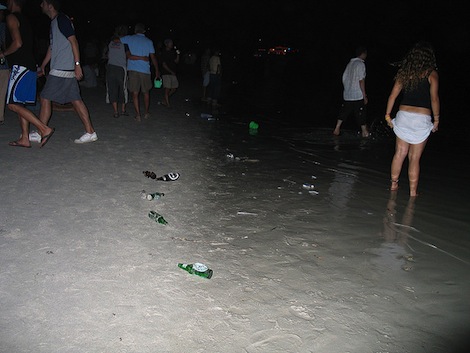
This concept has been applied to tourism in the context of a tourism carrying capacity (TCC), “the maximum number of visitors which an area can sustain without unacceptable deterioration of the physical environment and without considerably diminishing user satisfaction” (Salerno, Viviano, Manfredi, Caroli, Thankuri, & Tartari, 2013, p. 116).
Take a Closer Look: Vehicle Congestion in Banff National Park
In late 2014, the Town of Banff approved $70,000 to study the feasibility of introducing a gondola network to connect the Banff Centre, the Banff Springs Hotel, the Upper Hot Springs, and the existing mountain gondola. That summer the town experienced 54 days of congestion that exceeded its threshold of 20,000 vehicles per day, with vehicle waits and idle times of up to 1.5 hours during peak periods. To learn more about the issue and proposed solutions, read “Banff Considers Potential of Gondola Network”: http://calgaryherald.com/business/local-business/banff-considers-potential-of-gondola-network
There are many examples of TCC being applied in tourism globally. In Canada, national parks use the concept to ensure visitor numbers are restricted to a sustainable level. Studies of tourism in the Cayman Islands indicate this destination may soon be exceeding its TCC. Although TCC is a theoretical concept that is often discussed and utilized for analysis, in reality it can be challenging to restrict the numbers of tourists arriving at a destination.
Footprint
Ecological footprint is essentially a tool to analyze the impact of a population on Earth (Rees, 2001). The model calculates the total area of land and water resources used to support the population, presenting it in a manner that can be easily related to — usually in terms of the amount of land needed to support an individual at the standard of living that person is used to.
Typically, residents of industrialized, developed nations (such as Canada) require a larger land area to support their lifestyle than residents of developing nations, who have smaller ecological footprints due to lower consumption.
Tragedy of the Commons
Tragedy of the commons is an economic theory first proposed by Garrett Hardin in 1968, which states that if individuals are given the chance to overuse a common property, they will, in order to realize the maximum personal benefits. If every person does this, common property quickly becomes overused and damaged (Hardin, 1968).
For example, a group of tourism operators may look at a pristine natural area and see a chance for economic profit, and in the race for development, little or nothing is done to protect the area. If this unchecked development were to continue, the damage to the environment could reach a point where the elements that attracted tourists in the first place are irreversibly damaged, thus resulting in the “tragedy” that Hardin discusses (Hardin, 1968).
The tragedy of the commons leads to something known as the tourism paradox, a concept that describes the paradoxical nature of tourism’s relationship with the environment.
The Tourism Paradox
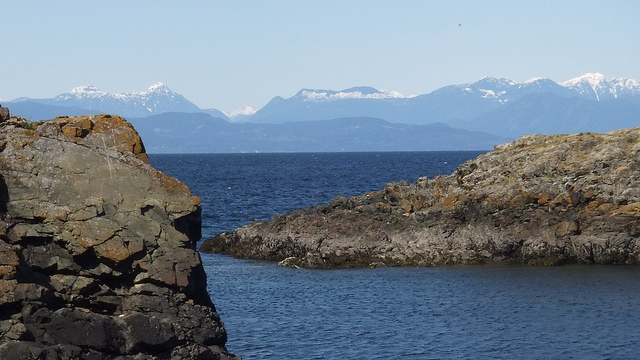
A common theme promoted by many tourism destinations is their location in some of the most ecologically fragile environments in existence — coastal, mountain, and river environments (Williams & Ponsford, 2008). Tourism requires these areas to be intact to serve as an attraction to visitors. Tourists expect a clean physical environment, appropriate seasonal conditions, and diversity of wildlife. Destinations failing to provide at least some of these elements risk losing their competitive edge in the global market; visitors will steer clear of polluted, barren landscapes with unpredictable or uncomfortable weather.
Spotlight On: The Resort Municipality of Whistler
The community of Whistler relies heavily on natural resources for its local tourism products, such as skiing, and has long been active in sustainability initiatives. The plan, Whistler 2020, sets out integrated community strategies for enhancing community life, enhancing the resort experience, ensuring economic viability, protecting the environment, and partnering for success. For more information about the plan and Whistler’s progress with these initiatives, visit Whistler 2020: www.whistler.ca/municipal-government/strategies-and-plans/whistler2020
At the same time, the tourism industry is itself causing environmental damage through its own development in pristine areas, consumption of resources, and contribution to climate change. This is the paradox: as an industry, tourism both creates damage and suffers from it. That’s why it’s critical for the industry to be proactive about environmental sustainability in tourism; failing to do so may result in our downfall (Williams & Ponsford, 2008).
Before we gain a better understanding of the ways the tourism industry and individual operators can try to mitigate their impacts, let’s take a closer look at the overall management of BC’s environmental resources.
Environmental Management in BC
Environmental impacts in BC are managed by a variety of governmental organizations, primarily at the provincial or federal level. Each of these agencies has a role to play, from regulation of land access and resource extraction to environmental monitoring and cleanup. To understand how the impacts are managed, let’s review the basic categories of land use in BC.
Land Use
There are essentially four broad land categories in BC: private land, provincial Crown land, federal Crown land, and First Nations land.
Private land in BC is any land where private property rights apply. This includes residential, commercial, and agricultural zoned land throughout the province. If private property rights apply, the owner has more rights over that land for development and use than any other classification of land. Tourism companies wishing to operate on private property need to gain ownership of the land, or failing that, permission to operate on the land. Private property accounts for approximately 5% of the land mass in BC (Government of BC, 2011).
The term Crown land applies to any land that is owned by either the provincial or federal government. Provincial Crown land makes up 94% of BC, making it the largest category of land in the province. Provincial Crown land is available for a wide range of activities that encourage recreation and economic development, including tourism (Government of BC, 2011).

Designated park areas are managed by BC Parks, the agency that reviews and issues permits for tourism companies to operate within a park. Other provincial Crown land is managed by a variety of government agencies, such as the Ministry of Forests, Lands, and Natural Resource Operations (MFLNR).
Federal Crown land is all land that is owned by the Government of Canada; in BC, less than 1% of the overall land is federal Crown land. It primarily consists of parks and protected areas that are managed by Parks Canada, the federal agency that has a mandate to preserve and share “natural and cultural heritage” and help ensure enjoyment and appreciation “for present and future generations” (Parks Canada, n.d.).
Take a Closer Look: Parks and Protected Areas in BC
Two examples of pristine parks in BC are Pacific Rim National Park and Garibaldi Provincial Park. Pacific Rim is operated by Parks Canada. It covers a beautiful stretch of land along the west coast of Vancouver Island. Visit the webpage at Pacific Rim National Park Reserve: parkscanada.gc.ca/pacrim
Garibaldi is managed by BC Parks. It is located just north of Vancouver and protects a pristine mountainous region. Learn more at Garibaldi Provincial Park: www.env.gov.bc.ca/bcparks/explore/parkpgs/garibaldi/. Both parks serve as significant natural attractions for tourism in BC.
First Nations land includes any area where Aboriginal title has been established and responsibilities for management lie with the relevant First Nations group. Large areas of designated Crown land in BC are considered by First Nations groups as traditional, and these are currently going through the treaty negotiation process, which will likely result in a larger proportion of the BC land area coming under First Nations management.
Land Use for Tourism and Hospitality
Businesses and organizations wishing to use Crown land for economic development must apply and be approved for Crown land tenure, which is an agreement with the BC government to use the land for commercial purposes. Examples of the types of tourism operations that might seek tenure include mountain resorts, golf courses, backcountry lodges, tour operators, resort development, and marina construction. It’s estimated that about 16% of the tourism industry in BC depends on access to Crown land through the Crown land tenure program (Government of BC, 2010).
Different tenures are available depending on the type, location, and intensity of use proposed. A temporary permit grants use for approved activities for up to two years, but not exclusive use (other commercial operators may still use the area). A licence of occupation, the next level of tenure, provides for light development (e.g., semi-permanent structures or trails). This type of licence is typically issued for terms of five to 30 years and is renewable. A lease is a long-term contract for tenure, typically for 30 years. With a lease, operators can make substantial improvements to the land including significant structures such as lodges, restaurants, ski lifts, roads, and so on. It is the longest term and the most secure type of tenure (Government of BC, 2010).
Any tourism business wishing to operate on First Nations land requires permission from the local First Nations band. Companies wanting to operate in a national park also need to apply for a permit. Although resource extraction is restricted, national parks often encourage tourism development that is sustainable and appropriate for the local environment.
Environmental Protection and Assessment
Other elements of environmental stewardship in BC fall to the Ministry of Environment. This ministry has five divisions: Environmental Protection, Environmental Sustainability and Strategic Policy, Parks and Protected Areas, Climate Action Secretariat, and Conservation Officer Service. These divisions are responsible for environmental cleanup and spill response, climate change initiatives, protected areas management, and wildlife (British Columbia Ministry of Environment, n.d.a). This applies to all individuals and commercial enterprises in BC, including tourism.
Additionally, the Environmental Assessment Office plays an important role in environmental stewardship on Crown lands in BC. All major projects being proposed for development on Crown land must undergo an environmental assessment and have it approved by this office, which is a neutral agency set up specifically for this purpose. Projects are evaluated not only for their potential impacts on the environment, but also on their economic, social, cultural, and heritage aspects. Large-scale tourism projects such as mountain resorts are required to proceed through the environmental assessment process (Environmental Assessment Office, n.d.).
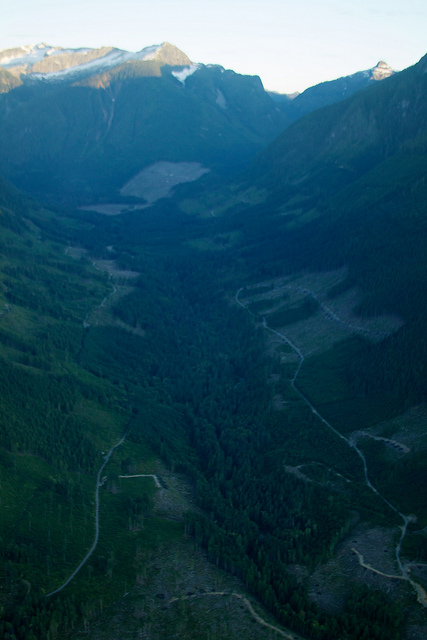
The current land management system in BC has led to numerous conflicts between tourism operators and resource extraction operations such as mining and forestry. Often, overlapping tenure is given to multiple companies with conflicting operational goals. Tourism operators typically require a clean environment, high-quality viewscapes, intact biodiversity, and an environment free of industrial scars. To maintain these values, any resource extraction needs to occur far from where tourism operators conduct their activities. In recent years, tensions have been building as access to wilderness areas becomes scarcer, with tourism values often falling second to resource extraction under the existing system (Webster, 2013).
Take a Closer Look: Conflicts Between Tourism and Resource Extraction in BC
Tourism companies complain that despite being part of the $1.6 billion nature-based tourism industry in BC, the government favours traditional logging values. This article discusses one example on northern Vancouver Island where a kayaking operator feels logging is threatening its livelihood. Learn more by reading the article, “Logging Threatens Tourism, Kayaking Company Charges”: www.pressreader.com/canada/the-vancouver-sun/20150103/281599533867296
The issues discussed above provide a framework for thinking about environmental management and the impacts of the tourism industry in BC. As part of the industry, we have an important responsibility to recognize impacts and take steps to reduce them. The next section addresses how we might do just that.
Mitigating Tourism and Hospitality Impacts
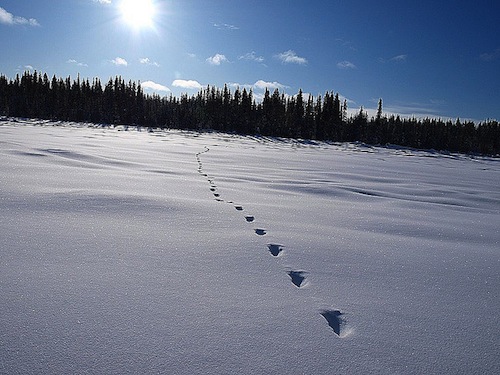
In recent years in BC, the tourism industry has felt the impacts of climate change, habitat destruction, biodiversity loss, and increased conflicts over the use of natural areas. The winters of 2013/2014 and 2014/2015 were two of the warmest on record, and numerous low-elevation coastal mountain resorts were forced to close in the middle of the winter season (Hager, 2015). As well, the province is experiencing increased pressure on endangered wildlife species that draw tourists and residents alike. The death of an orca whale off the coast of Vancouver Island in late 2014 raised questions of water pollution and contamination (Theodore, 2014).
Take a Closer Look: The Future of Mountain Resorts
With their dependence on quality snow conditions for guests, ski areas will likely be among the first to be impacted by climate change. Read an article on this topic from the Tyee, “Peak Snow? BC Ski Resorts Brace for Warmer Era”: thetyee.ca/News/2014/12/22/Peak-Snow-Ski-Resorts/
In the face of this negative environmental news, there are a variety of initiatives underway that have the potential to implement real change. These include:
- Carbon offsetting
- Energy conservation
- Water conservation
- Food production management
- Waste management
- Accreditation
This section explores these potential solutions.
Carbon Offsetting
Carbon offsetting is a standardized, regulated system that provides organizations with the ability to invest in green initiatives that will counterbalance their emissions, hence creating a carbon neutral situation (David Suzuki Foundation, 2009).
The concept of carbon offsetting stems from a recognition that despite a desire to entirely eliminate carbon emissions, sometimes doing so isn’t immediately feasible. Consequently, carbon offsetting has proven popular with tourism companies that can offset some or all of their emissions, either by themselves or by providing the opportunity for customers to do so. Examples are most commonly found in the transportation sector, where the reliance on traditional fossil fuels makes it challenging to completely eliminate carbon emissions.
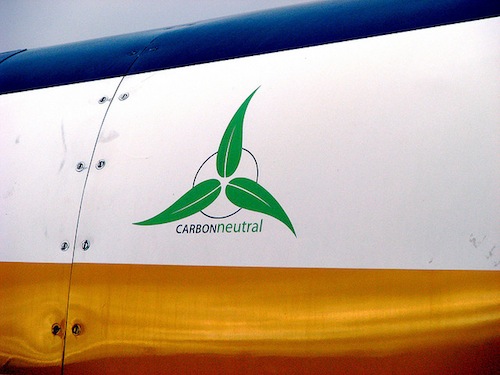
Take Harbour Air, for instance, a small BC airline. Since 2007, the company has completely offset all of the emissions produced by its airplanes by investing in energy-efficiency and fuel-switching projects in BC. The cost of the projects is passed on to passengers through a small levy added to the ticket price, and despite the cost increase, passenger traffic increased by 12% to 15% in the following year (Offsetters, n.d.).
Take a Closer Look: Carbon Offsetting and the Vancouver 2010 Winter Olympics
The Vancouver 2010 Winter Olympics were the first carbon-neutral Olympic Games. For more information, read the discussion paper, Meeting the Challenge: A Carbon Neutral 2010 Winter Games: http://davidsuzuki.org/publications/reports/2007/meeting-the-challenge/
Carbon offsetting isn’t just for the transportation sector, however. Tinhorn Creek Winery in Oliver has become a tourism destination for wine and culinary tourists and has some innovative conservation concepts. In addition to having an offsetting program, the winery runs its vehicles on biodiesel. It also holds virtual tastings with travel media over the web (media obtain samples of the product ahead of time), eliminating travel to the Okanagan to have a Tinhorn experience. The property remains dedicated to exploring sustainability concepts as its survival is based on mitigating climate change and the negative effects of drastic weather changes on wine production (Tinhorn Creek Winery, 2014).
Energy Conservation
Despite the relatively low cost of electricity in BC, it benefits all operators to do their part by reducing consumption and greenhouse gas emissions. Not only is this the right thing to do for the physical environment, it’s also a means to save money.
For example, the Four Seasons in Vancouver reduced their electricity consumption by 4,000 megawatt hours in the period between fall 2012 and spring 2014. They did this by installing timers and photocells on lights, auditing appliances, ensuring proper maintenance of the furnace and HVAC systems, and cleaning light fixtures and fans so these operated at their best. The energy reduction represented a savings of $135,000 for the property (Hui, 2014).
Take a Closer Look: Energy Conservation in the Hospitality Sector
BC Hydro’s PowerSmart program for businesses has helped operators large and small — from BC Ferries to the Pear Tree Restaurant in Burnaby — to reduce their footprint and save money. Read success stories, check out helpful tools, and learn more about the program by visiting Hospitality: Increase profits by reducing energy costs: www.bchydro.com/powersmart/business/types-of-business-customers/hospitality.html
BC Ferries is another organization that has realized energy savings. It did this with the help of BC Hydro education programs and incentives, retrofitting lighting and installing radiant heat in a workshop and toll booths. These efforts yielded an energy savings of over 335 megawatt hours in one year. That represents enough energy to power 31 average homes over the same time period (BC Hydro, 2013).
Water Conservation

British Columbia is home to 25% of Canada’s fresh water, and so to many it appears that water conservation is not an issue in the province. However, water is not evenly distributed across regions, nor is it equally available all seasons of the year (BC Ministry of Environment, n.d.b). This is especially evident on Salt Spring Island, a popular tourist destination with numerous small accommodation properties. The island experiences water shortages in the peak summer season when lake and groundwater levels drop and demand is highest.
In 2006, a number of local water conservation groups on Salt Spring Island surveyed 117 accommodation providers to determine what measures might be taken to alleviate the summer pressure on freshwater systems. They were pleasantly surprised to find that several properties had already taken steps, including installing low-flow toilets and flow restrictors on shower heads, requiring minimum two-night stays (which reduces the amount of laundry required), and offering visitor education campaigns. The combined efforts of properties on the island have proven to make a significant difference to the collective capacity of 1,500 guests per night (O’Callaghan, 2006).
Food Production and the Environment
As discussed in Chapter 4 on food and beverage services, there is increasing awareness among the general public about the importance of healthful eating. This goes hand in hand with an increased understanding of food production issues including environmental impacts such as pollution, soil depletion, and the toxicity (both to humans and the environment) of industrial food growth practices. Over the last 30 years, American (and to an extent, Canadian) food growth has centred on the mass production of inexpensive staple foods such as corn and soy, which are used in unhealthy foods like high-fructose corn syrup and soybean oil, and are fed to the animals we eat (University of Minnesota, 2009).
Spotlight On: Island Chefs Collaborative
The Island Chefs Collaborative (ICC) is an organization that supports connections between local agriculture and the food and beverage industry. Its vision is a local and sustainable food and agriculture system for Vancouver Island. For more information, visit the Island Chefs Collaborative website: www.iccbc.ca
Farming mass amounts of one crop is known as monoculture, a practice that depletes the soil and encourages the use of pesticides and fertilizers for increased production. The impacts of these chemicals to date include the creation of a “dead zone” at the outflow of the Mississippi River into the Gulf of Mexico, where no fish or other animals can live (University of Minnesota, 2009).
The soil in which food is grown is becoming less rich as commercial fertilizers focus only on building specific nutrients. Combined with the long distances that foods are shipped (sometimes causing nutrients to be depleted), consumers are becoming wary of commercially produced foods (University of Minnesota, 2009).
The 100-Mile Diet and Farm to Table
In 2005, two BC-based journalists, J.B. MacKinnon and Alisa Smith, began chronicling the challenges of only eating food produced within 100 miles of their homes, as part of a serial of articles for the Tyee. Their posts became a book, The 100-Mile Diet, launched in 2007 and heralded as a vanguard of the local food movement (Tyee, 2005).
Spotlight On: Circle Farm Tour
Created through a partnership between destination marketing organizations in the Fraser Valley communities of Abbotsford, Chilliwack, Agassiz-Harrison, and Maple Ridge-Pitt Meadows, the Circle Farm Tour brings awareness to farming practices and farmland conservation while creating a collaborative tourism product. Self-guided tours are made possible through a series of branded maps, brochures, and a central website. For more information, visit the Circle Farm Tour website: http://circlefarmtour.com
Organizations such as FarmFolk CityFolk, a not-for-profit organization dedicated to food sustainability in the province, have been promoting farm-to-table dining for over 20 years. Their efforts include working with restaurants to bring quality ingredients to the sector, and hosting annual events that celebrate the “feast of fields” in regions such as the Okanagan (FarmFolk CityFolk, 2014).
Waste Management

In 2012 in BC, the amount of garbage generated was equivalent to 570 kilograms per person. With landfills and treatment sites filling to capacity (and sometimes beyond), it’s imperative that communities and businesses work together in the practice of proper waste management through implementing recycling programs, reducing garbage, properly treating industrial and hazardous waste, and treating sewage and wastewater (Government of BC, n.d.).
One very effective means of reducing garbage taken to the landfill is implementing a food waste program in which food scraps are placed in a green bin and collected by the community for composting. The City of Vancouver initially introduced such a program to single family households from 2011 to 2013 and saw a 30% drop in garbage generated. In 2014, the program was expanded to include all households and businesses and placed a ban on food scraps in the garbage. The program met resistance from the BC Restaurant and Foodservices Association, which viewed the initiative as placing an extra cost and being a logistical challenge for members (Nagel, 2014). Individual restaurateurs were hopeful, however, that the city would help businesses by increasing pickup and expanding the efficiency of their other recycling programs (Robinson, 2014).
Accreditation and Certification
Environmental accreditation or certification is a type of voluntary regulation where an organization agrees to follow a set of standards, predefined processes, or regulations. These are generally developed by independent non-governmental organizations with a goal of reducing the environmental impact within an industry. Accreditation can encompass any of the practices discussed so far — from carbon offsetting to energy and water conservation to waste management.
Beyond the value of making the ethical decision of working to reduce environmental impacts, organizations receive value by being able to promote themselves as being environmentally friendly and therefore attracting consumers (Font, 2002). And for guests, choosing an independently accredited business may help them avoid companies that are guilty of greenwashing, which is the promotion of environmentally friendly tourism products without actually achieving the environmental standard promised (Lelenicz & Simoni, 2012; Self, Self, & Bell-Haynes, 2010).
Spotlight On: Green Key Global
Green Key Global is an international certification body that evaluates the accommodations and meetings industries on the basis of their sustainable initiatives. Headquartered in Ontario, its Green Key Eco-Rating Program awards from 1 to 5 keys to hotels, with 47 properties currently holding the highest rating. Green Key Global conducts an on-site assessment and provides operators with suggestions for improving their sustainability efforts. Awarded keys are then used as marketing and promotional tools. A similar program serves the meetings and events sector. For more information, visit the Green Key Global website: http://greenkeyglobal.com
Organizations join such programs voluntarily. This typically involves going through an audit to prove adherence to a set of environmental standards (Font, 2002). Generally, an audit consists of an independent third party visiting a business or operation and reviewing its practices against a checklist of standards; those that pass earn the certification or accreditation.
It is estimated that over 100 different tourism environmental certification programs exist, each with different standards and criteria (Self, Self, & Bell-Haynes, 2010).
Spotlight On: Green Tourism Canada
Green Tourism Canada is an environmental tourism certification program where tourism operators are assessed for adherence to sustainability principles. It offers ongoing support and consultation so that operators may work to achieve a high level of environmental sustainability. For more information, visit Green Tourism Canada: www.greentourismcanada.ca
Whether it be through carbon offsetting, energy and water conservation, increased use of local and organic food products, or official accreditation programs, the tourism industry has a number of options for lessening the impacts of businesses on the physical environment.
Conclusion
Numerous studies suggest society will face increasing pressure for scarce resources and a changing natural environment due to habitat destruction, pollution, and climate change (Hardin, 1968; Mercer, 2004; Williams & Ponsford, 2008; Wong, 2004; World Tourism Organization, 2008b). The tourism industry must recognize its considerable contribution to this global challenge and take aggressive steps to mitigate the impacts.
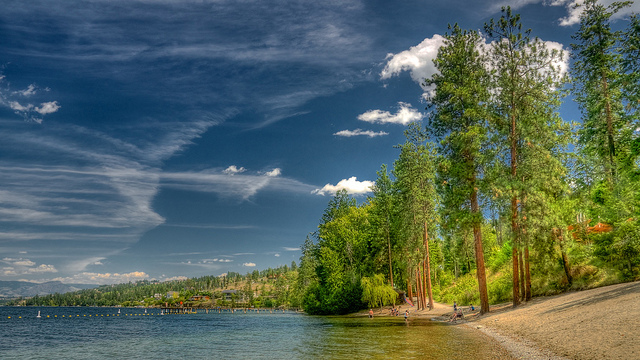
On a global scale, the tourism industry needs to recognize its release of significant carbon emissions and explore ways to reduce these while maintaining the mobility needed for travel. On a local scale, tourism stakeholders need to recognize the risk they pose to the destruction of local pristine environments and take steps to ensure the sustainability of their operations. Only by working together can we ensure a future for tourism and our society as a whole.
This chapter has addressed a major risk to the tourism industry — the threat of environmental impacts and disasters on businesses and communities. Chapter 11 addresses the concept of risk management and legal liability in the industry.
Key Terms
- BC Parks: the agency responsible for management of provincial parks in British Columbia
- Carbon offsetting: a market-based system that provides options for organizations to invest in green initiatives to offset their own carbon emissions
- Carrying capacity: the maximum number of a given species that can be sustained in a specific habitat or biosphere without negative impacts
- Crown land: land owned and managed by either the provincial or federal governments
- Crown land tenure: rights given to commercial organizations to operate on Crown land
- Direct climate impacts: what will occur directly as a result of changes to the climate such as extreme weather events
- Ecological footprint: a model that calculates the amount of natural resources needed to support society at its current standard of living
- Environmental accreditation or certification: a voluntary system that establishes environmental standards and regulates adherence to reducing environmental impacts
- Environmental Assessment Office: the provincial agency responsible for reviewing large projects occurring on Crown land in BC
- Environmental management: policies and procedures designed to protect natural values while providing a framework for use
- Environmental stewardship: the practice of ensuring natural resources are conserved and used responsibly in a way that balances the needs of various groups
- First Nations land: land under Aboriginal title or that is managed by First Nations
- Greenwashing: the act of claiming a product is “green” or environmentally friendly solely for marketing and promotional purposes
- Indirect environmental change impacts: what will occur indirectly as a result of climate change, including damages to infrastructure
- Ministry of Environment: the provincial ministry responsible for the environment in BC
- Monoculture: a farming practice that depletes the soil and encourages the use of pesticides and fertilizers for increased production
- Parks Canada: the federal agency responsible for management of national parks, historic sites, and marine conservation areas
- Private land: any land where private property rights apply in BC
- Sustainable development: planning and development that is mindful of future generations while meeting society’s needs today
- Tourism carrying capacity (TCC): the maximum number of people that can visit a specific habitat in a set period of time without negative impacts, and without compromising the visitor experience
- Tourism paradox: the concept that tourism operations destroy its very requirements for success — a pristine natural environment
- Tragedy of the commons: the tendency of society to overconsume natural resources for individual gain
Exercises
- What does carrying capacity mean? Provide an example from your local tourism industry.
- List five impacts that climate change will create and five corresponding implications for the tourism industry.
- Articulate the difference between provincial Crown land, federal Crown land, private land, and First Nations land.
- What is the Environmental Assessment Office and what are its responsibilities?
- Use the carbon footprint calculator (http://www.livesmartbc.ca/homes/h_calc.html) to determine your household carbon footprint. How many tonnes of greenhouse gas (GHG) do you emit per year? Name three actions you could take to reduce your footprint.
- Explain what the tourism paradox is, giving examples from your local tourism industry.
- This video from the David Suzuki Foundation presents the case that insurance companies are reacting to climate change because it is impacting them financially through claims after extreme weather events. Watch the video, Your insurance is being affected by climate change, here is how: https://vimeo.com/108216236. What do you think? Will insurance companies continue to offer coverage in the face of increasing extreme weather events and large-scale insurance payouts?
- Visit the website “The Story of Stuff” (http://storyofstuff.org). Watch the movies and review the fact sheets. Reflect on the message that the organization is delivering and answer the following questions:
• What is the core message of the organization? Why is it important?
• How can you as an individual make a real change to mitigate consumptive behaviour?
• Relating these principles to tourism, how would you implement them in a tourism company?
Case Study: Jumbo Mountain Resort
Jumbo Mountain Resort near Invermere has long been one of the most controversial tourism developments in BC. Proponents claim that it will add a world-class skiing resort product to the economy. Opponents argue that the environmental impacts are not worth the limited economic return it offers, including threatening grizzly bears and other sensitive species (Lavoie, 2014).
The planning process for the resort has taken over 20 years with initial permits issued in 2004. Since then the project faced several delays in order to clear conditions of its environmental assessment. In December 2014, the project was delayed again as the government asked for more time to evaluate whether the newly poured foundations for lodge buildings were located in avalanche zones (Shaw, 2014).
Conduct your own research about Jumbo Mountain Resort using a minimum of three sources, and answer the questions below.
- What are some of the environmental impacts listed by those opposed to the resort?
- How might these impacts be mitigated? What steps is the company taking to do this?
- In addition to environmental impacts and avalanche risk, have there been there any other challenges to the resort?
- Given documented record warm temperatures and low snowfall in other resort areas of the province, and the currently relatively stable snow conditions at Jumbo, do you think it’s a good long-term investment? Why or why not?
- What is the progress of the project today? Do a scan of social media and news sites and try to determine where public opinion lies.
- How is the company responding to critics regarding its environmental stewardship strategies? What platforms is it using to communicate?
References
BC Hydro. (2013, November 1). BC Ferries saves energy, from lighting to radiant heat in tollbooths. Retrieved from www.bchydro.com/news/conservation/2013/bc-ferries-saves-energy.html
British Columbia Ministry of Environment. (n.d.a). Ministry divisions. Retrieved from www.env.gov.bc.ca/main/divisions.html
British Columbia Ministry of Environment. (n.d.b). Water stewardship. Retrieved from www.env.gov.bc.ca/wsd/plan_protect_sustain/water_conservation/
Brundtland, G. H. (1987). Report of the World Commission on environment and development: our common future [PDF]. United Nations. Retrieved from: www.un-documents.net/our-common-future.pdf
David Suzuki Foundation. (2009). Purchasing carbon offsets: A guide for Canadian consumer, businesses, and organizations. [PDF] Retrieved from: www.davidsuzuki.org/publications/downloads/2009/climate_offset_guide.pdf
Environmental Assessment Office. (n.d.). About. Retrieved from www.eao.gov.bc.ca/about_eao.html
FarmFolk CityFolk. (2014). About Us. Retrieved from www.farmfolkcityfolk.ca/who-we-are/
Font, X. (2002). Environmental certification in tourism and hospitality: progress, process and prospects. Tourism Management, 23(3), 197-205.
Government of BC. (2010). Mountain resorts. Retrieved from: www.for.gov.bc.ca/mountain_resorts/crown_land/index.htm
Government of BC. (2011). Crown Land: Indicators and statistics report. [PDF] Retrieved from www.for.gov.bc.ca/land_tenures/documents/publications/Crown_Land_Indicators_&_Statistics_Report.pdf
Government of BC. (n.d.). Waste management – Environment. Retrieved from www2.gov.bc.ca/gov/theme.page?id=1D1E3C96BFEE11B9960E8FFEC5AF406A
Hager, M. (2015, January 30th). How B.C.’s ski resorts are coping with global warmings’ threat to their existence. The Globe & Mail. Retrieved from: www.theglobeandmail.com/news/british-columbia/how-bcs-ski-resorts-are-coping-with-global-warming/article22731538/
Hardin, G. (1968). The tragedy of the commons. Science, 162(3859), 1243-1248.
Hui, Stephen. (2014, March 27). Four Seasons Hotel Vancouver shares energy conservation lessons for Earth Hour. Georgia Straight. Retrieved from www.straight.com/life/615691/four-seasons-hotel-vancouver-shares-energy-conservation-lessons-earth-hour
Lavoie, J. (2014, October 31). Jumbo Glacier Resort threatens grizzlies. Troy Media. Retrieved from www.troymedia.com/2014/10/31/jumbo-glacier-resort-threatens-grizzlies/
Lelenicz, M. & Simoni, S. (2012). Ecolabels in tourism. Agricultural Management, 14(4), 49-52.
Mercer, D. (2004). Tourism and resource management. In C. Hall, A. Lew & A. Williams (Eds.) A Companion to tourism (pp. 462 – 472). Oxford, UK: Blackwell Publishing.
Nagel, Jeff. (2014, May 22). Metro Vancouver disposal ban on food waste ‘unworkable’. Peace Arch News. Retrieved from www.peacearchnews.com/news/260293271.html
O’Callaghan, P. (2006). The greening of tourist accommodation on Salt Spring Island. The Partnership for Water Sustainability in BC. Retrieved from waterbucket.ca/wuc/2006/10/06/the-greening-of-tourist-accommodation-on-salt-spring-island/
Offsetters. (n.d.). Harbour Air. Retrieved from www.offsetters.ca/advisory-services/case-studies/harbour-air
Parks Canada. (n.d.). Mandate. Retrieved from www.pc.gc.ca/eng/docs/pc/plans/rpp/rpp2013-14/sec01/sec01a.aspx
Rees, W. (2001). Ecological footprint, concept of. In Encyclopedia of Biodiversity (vol. 4). Waltham, MA: Academic Press, 229-244.
Robinson, M. (2014, October 2). For Vancouver restaurants, it’s not easy being green. The Vancouver Sun. Retrieved from www.vancouversun.com/business/Vancouver+restaurants+easy+being+green/10257218/story.html
Salerno, F., Viviano, G., Manfredi, E. C., Caroli, P., Thakuri, S., & Tartari, G. (2013). Multiple carrying capacities from a management-oriented perspective to operationalize sustainable tourism in protected areas. Journal Of Environmental Management, 128, 116-125.
Self, R. M., Self, D. R., & Bell-Haynes, J. (2010). Marketing tourism in the Galapagos Islands: Ecotourism or greenwashing? International Business & Economics Research Journal, 9(6), 111.
Shaw, R. (2014, December 12). More delays for Jumbo Glacier Ski Resort. The Vancouver Sun. Retrieved from www.vancouversun.com/news/More+delays+Jumbo+Glacier+resort/10465008/story.html
Theodore, T. (2014, December 5). Endangered female killer whale found dead off Vancouver Island. The Globe & Mail. Retrieved from www.theglobeandmail.com/news/british-columbia/endangered-female-killer-whale-found-dead-off-vancouver-island/article21979825/
Tinhorn Creek Winery. (2014). Tinhorn – Our winery – Sustainability – Carbon. Retrieved from www.tinhorn.com/Our-Winery/Sustainability/Carbon
Tyee. (2005, June 28). 100-mile diet. Retrieved from thetyee.ca/Series/2005/06/28/100Mile/
University of Minnesota. (2009, March 19). How are food and the environment related? Retrieved from www.takingcharge.csh.umn.edu/explore-healing-practices/food-medicine/how-are-food-and-environment-related
Watson, R. T., Zinyowera, M. C., & Moss, R. H. (Eds.). (1997). The regional impacts of climate change: an assessment of vulnerability. Cambridge, UK: Cambridge University Press. Retrieved from www.ipcc.ch/ipccreports/sres/regional/
Webster, D. (2013). Adventure tourism operators and snowmobiles; managing interactions. [PDF] Retrieved from https://dspace.royalroads.ca/docs/bitstream/handle/10170/660/webster_donald.pdf?sequence=1
Williams, P. W., & Ponsford, I. F. (2008). Confronting tourism’s environmental paradox: Transitioning for sustainable tourism. Futures, 41(6), 396-404.
Wong, P. (2004). Environmental impacts of tourism. In C. Hall, A. Lew & A. Williams (Eds.) A companion to tourism (pp. 450 – 461). Oxford, UK: Blackwell Publishing.
World Tourism Organization. (2008a). Climate change and tourism: Responding to global challenges. [PDF] Retrieved from www.unwto.org/sdt/news/en/pdf/climate2008.pdf
World Tourism Organization. (2008b). From Davos to Bali: A tourism contribution to the challenge of climate change [PDF]. Retrieved from http://sdt.unwto.org/sites/all/files/docpdf/ccbrochdavbalmembbg.pdf
Worrell, R., & Appleby, M. C. (2000). Stewardship of natural resources: definition, ethical and practical aspects. Journal of Agricultural and Environmental Ethics, 12(3), 263-277.
Attributions
Figure 10.1 Bear Watching, British Columbia, Canada by Travel Junction is used under a CC BY-SA 2.0 license.
Figure 10.2 COP15 UNFCCC Climate Change – Opening Ceremony by UN Climate Change is used under a CC BY-NC 2.0 license.
Figure 10.3 Helms Glacier melting in the hot sun by Kyle Pearce is used under a CC BY-SA 2.0 license.
Figure 10.4 Dirty Boat: view of Coney Island from the beach after Hurricane Sandy by drpavloff is used under a CC BY-NC 2.0 license.
Figure 10.5 Full Moon Party by Dav Naginuma is used under a CC BY-NC-SA 2.0 license.
Figure 10.6 British Columbia Coast Range by gordon hunter is used under a CC BY-SA 2.0 license.
Figure 10.7 BC Parks Ranger A.J. by Park Ranger is used under a CC BY-NC-SA 2.0 license.
Figure 10.8 Logging decimation in Jervis Inlet by McKay Savage is used under a CC BY-SA 2.0 license.
Figure 10.9 I Will Follow by Bruce McKay is used under a CC BY-NC-ND 2.0 license.
Figure 10.10 Harbour Air – the world’s first Carbon Neutral Airline by Djun Kim is used under a CC BY-NC-SA 2.0 license.
Figure 10.11 Pineapple Express by Steven Petty is used under a CC BY-SA 2.0 license.
Figure 10.12 Food Scraps Drop Spot project by Vancouver Farmers Market by brent granby is used under a CC BY-NC-SA 2.0 license.
Figure 10.13 Beautiful Bertram Beach, Kelowna BC by Stuart Madden is used under a CC BY-SA 2.0 license.

